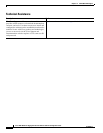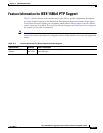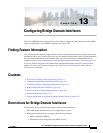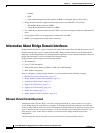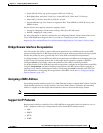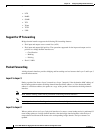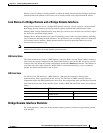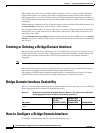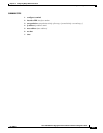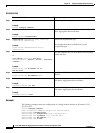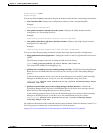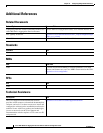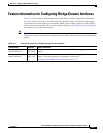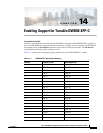
13-6
Cisco ASR 1000 Series Aggregation Services Routers Software Configuration Guide
OL-16506-17
Chapter 13 Configuring Bridge Domain Interfaces
Creating or Deleting a Bridge Domain Interface
When packets flow from a Layer 2 bridge domain network to a Layer 3 routing network through the
bridge domain interface, the packets are treated as bridge domain interface input packets and bytes.
When packets arrive at a Layer 3 interface and are forwarded through the bridge domain interface to a
Layer 2 bridge domain, the packets are treated as output packets and bytes, and the counters are updated
accordingly.
A BDI maintains a standard set of Layer 3 packet counters as the case with all Cisco IOS interfaces. Use
the show interface command to view the Layer 3 packet counters.
The convention of the counters is relative to the Layer 3 cloud, for example, input refers to the traffic
entering the Layer 3 cloud from the Layer 2 BD, while output refers to the traffic leaving the Layer 3
cloud to the Layer 2 BD.
Use the show interfaces accounting command to display the statistics for the BDI status. Use the show
interface <if-name> command to display the overall count of the packets and bytes that are transmitted
and received.
Creating or Deleting a Bridge Domain Interface
When you define an interface or subinterface for a Cisco IOS router, you name it and specify how it is
assigned an IP address.You can create a bridge domain interface before adding a bridge domain to the
system, this new bridge domain interface will be activated after the associated bridge domain is
configured.
Note When a bridge domain interface is created, a bridge domain is automatically created.
When both bridge domain interface and bridge domain are created, the system maintains the required
associations for mapping the bridge domain-bridge domain interface pair.
The mapping of bridge domain and bridge domain interface is maintained in the system. The bridge
domain interface uses the index of the associated bridge domain to show the association.
Bridge Domain Interface Scalability
Table 13-1 lists the bridge domain interface scalability numbers, based on the type of Cisco ASR 1000
Series Aggregation Services Router’s Forwarding Processors.
How to Configure a Bridge Domain Interface
To configure a bridge domain interface, perform the following steps:
Table 13-1 Bridge Domain Interface Scalability Numbers Based on the Type of Cisco ASR 1000
Series Aggregation Services Router’s Forwarding Processors
Description
ASR1000-ESP5,
ASR 1001,
ASR 1002-F (ESP2.5)
ASR1000-ESP10,
ASR1000-ESP10-N,
ASR1000-ESP20 ASR1000-ESP40
Maximum bridge domain interfaces per
router
4096 4096 4096



